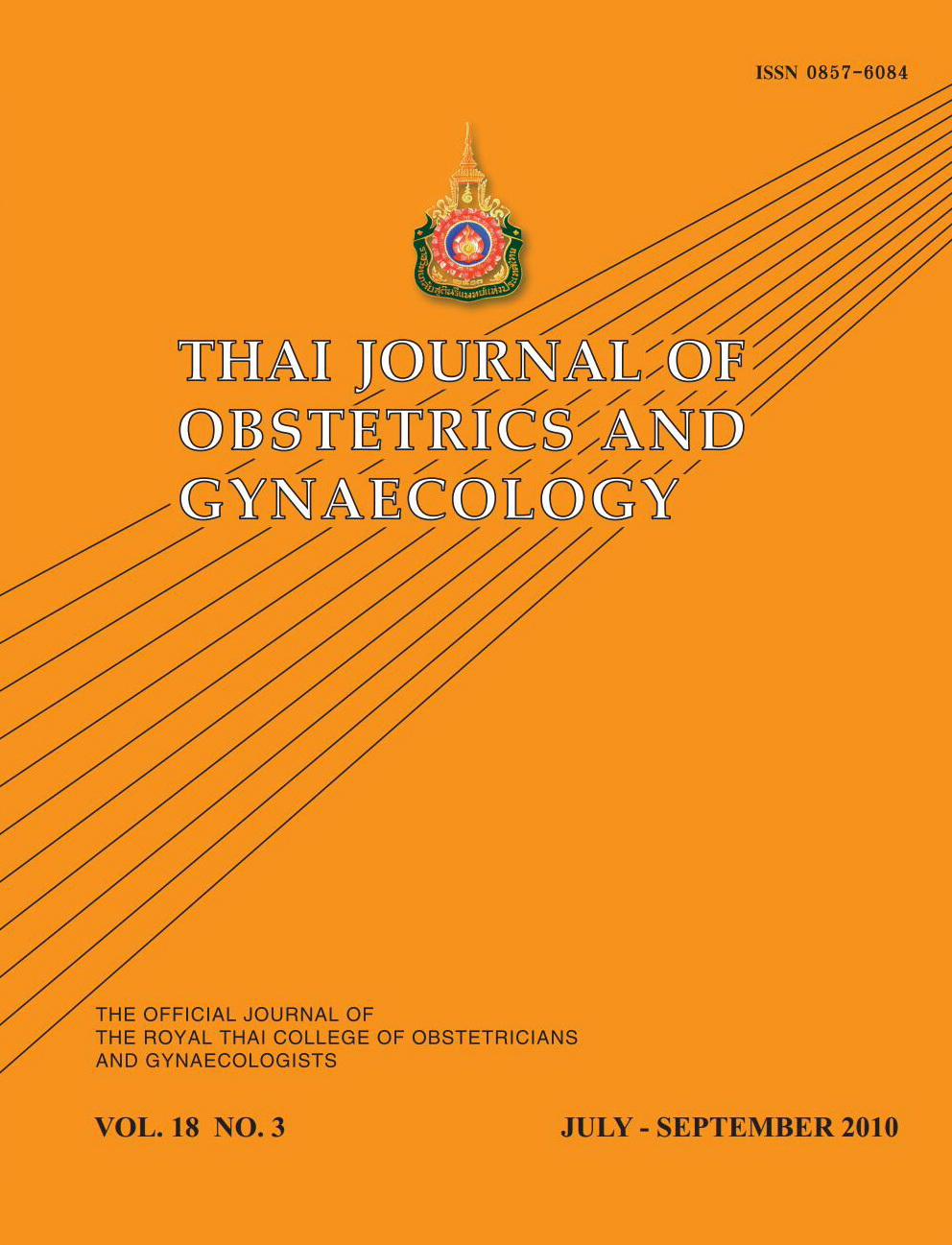Risk Factors for Two Consecutive Preterm Births in Southern Thailand
Main Article Content
Abstract
Objective: To identify the risk factors for two consecutive preterm births in southern Thailand.
Materials and Methods: A case-control study was conducted at Songklanagarind Hospital, the tertiary care hospital in the South of Thailand. Medical records of all women who had had a second live birth from 1997 to 2006 were reviewed. Term and preterm birth in both pregnancy were identified. The women having two preterm births were classified as the case group, and the women having preterm/term, term/preterm or term/term births were the control group. Socio-demographic characteristics, obstetric information and pregnancy complications were analyzed using univariate and multivariate analysis with a p-value of 0.05.
Results: During the study period, 94 women with two preterm births were included in the cases, and 385 controls were randomly selected from all eligible records. Women aged <20 years had an increased risk of two preterm births compared to those aged 20-34 years. An interpregnancy interval of <12 months was also more frequent in double preterm birth cases in univariate analysis, but not in multivariate analysis. Premature rupture of membranes (adjusted OR 2.1, 95%CI 1.2-3.6), urinary tract infection (adjusted OR 8.7, 95%CI 2.3-33.5) and pregnancy-induced hypertension (adjusted OR 4.0, 95%CI 1.7-9.2) were independent factors in both univariate and multivariate analyses.
Conclusions: Maternal age, premature rupture of membranes, urinary tract infection and pregnancy-induced hypertension were the significant factors in women having two consecutive preterm births. It is important for obstetricians to be aware of these risk factors in women who become pregnant after a previous preterm birth.

